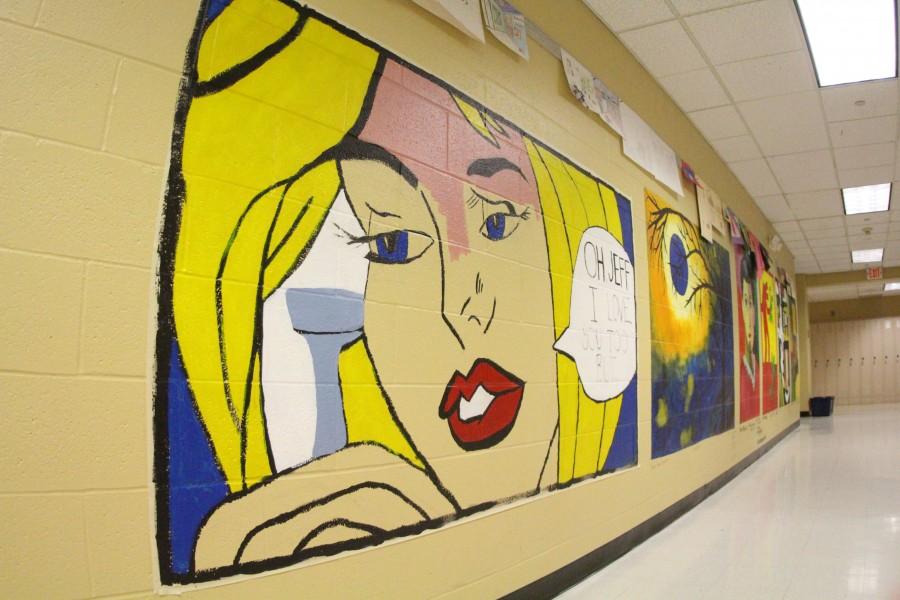Students Reflect on Their Year in Art Club, Orphanage Projects
Published: March 8, 2016
In art class, you might have heard Art Club sponsor Michael Leistner hint when art club is going on or that students should think about joining. Students who joined Art Club work on different artistic pieces, whether they be individual projects or projects with the whole club. Yes, art is being made but some might ask what more is there to the club?
For those who are not members of art club what they think when they hear the term ‘art club’.
“When I hear Art Club, I think of a bunch of easels in a classroom with students sitting at them,” sophomore Alivia Newberry said.
Art Club is a club for self expression, to create a masterpiece at 2:30 in room 160. Last year, students were allowed to create with any supplies available to them in the room. Students hang out, have parties and see their peers’ artwork as well. Posters are made for other clubs and the annual Art Club hat day was and is always a must.
“Art club in my opinion was pretty fun,” sophomore Sophia Welter said. “I think it was really cool getting to work on the mural outside in the art hallway.”
A big chunk of art club is revolved around individual pieces which students create for orphans in Guatemala, whether it be through drawing or painting. The process is very serious. Members receive a photo of the orphan they will be basing their portrait on. Students then spend months perfecting this project with the hope of putting a smile on an orphan’s face. After these pieces are completed they are shipped in an envelope with the original photo back to the orphanage. Students then get to receive photos of their orphan with the drawing or painting.
Art club members say that it is important to accept every student who has even the slightest passion for art, because there is always a way to find creativity inside an artist. Leister views art as something that is universal, that all people have a natural inclination toward.
“I think that humans have this natural urge to make lines; prehistoric humans painting on cave walls,” Leistner said. “Humans have the urge to express and communicate visually. Humans can communicate through talking or dancing but art for me can be expressed visually.”










![JV Girls Basketball Takes A Win To FZE On The First Game Of The Season [Photo Gallery]](https://FHNtoday.com/wp-content/uploads/2024/12/voccer10.24_kwallace-3-300x200.jpg)

![It's Time for the BOE to Respect Student Input [Editorial]](https://FHNtoday.com/wp-content/uploads/2024/11/Untitled_Artwork-1-300x173.png)


